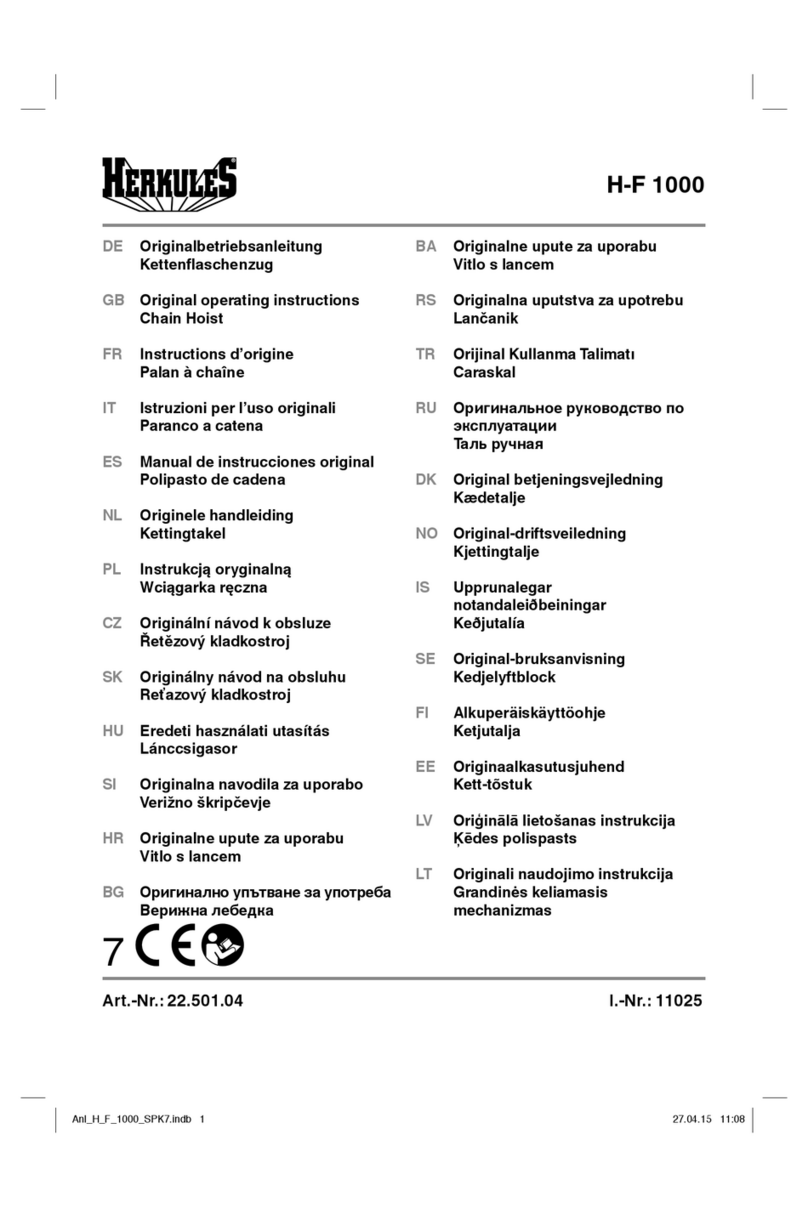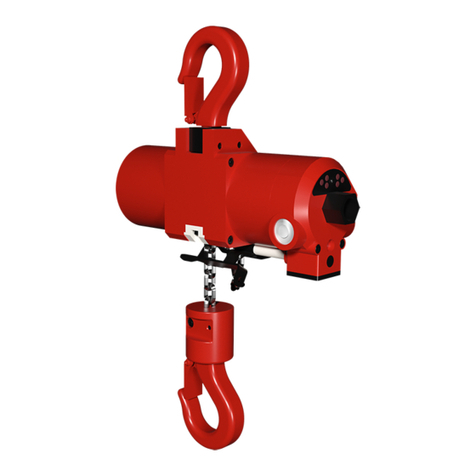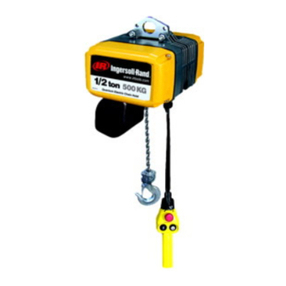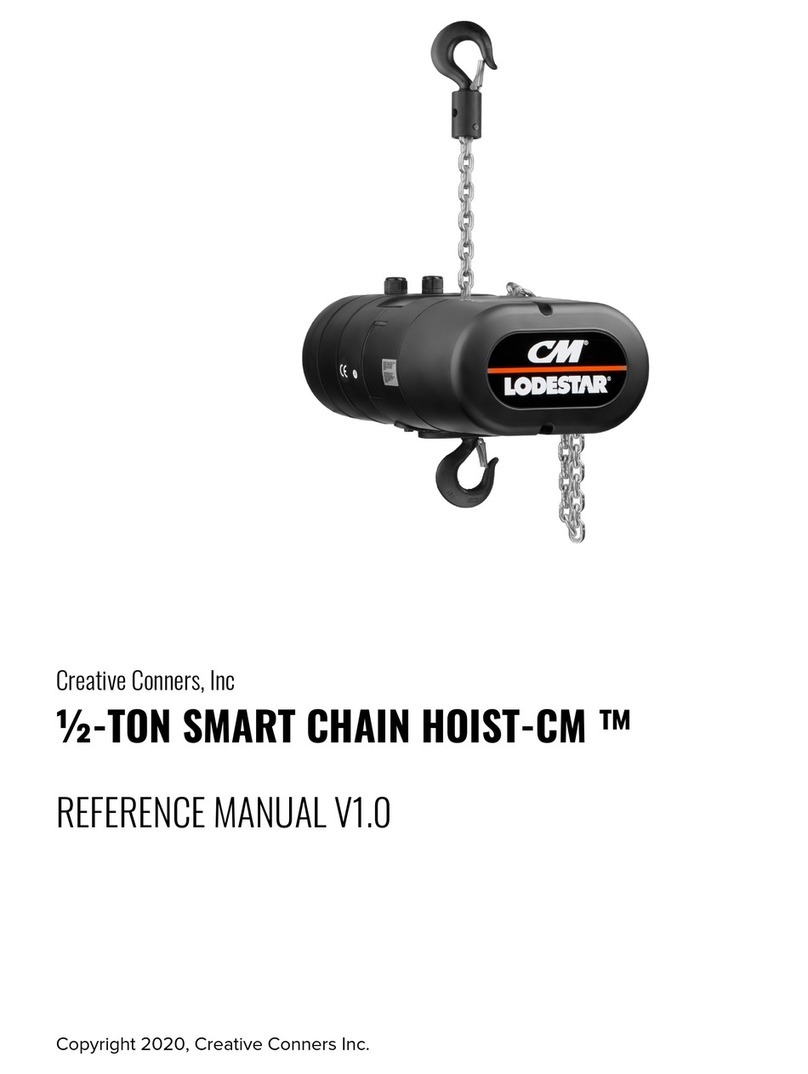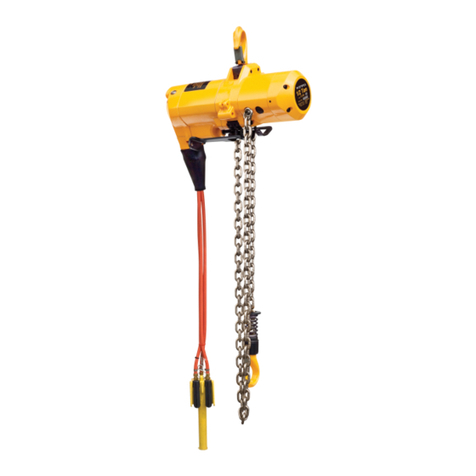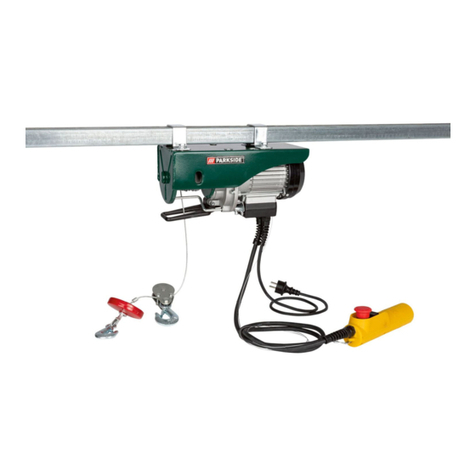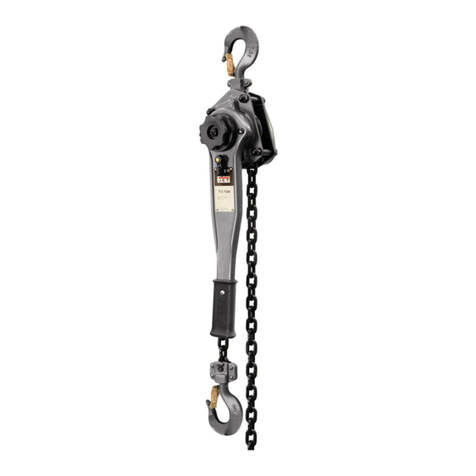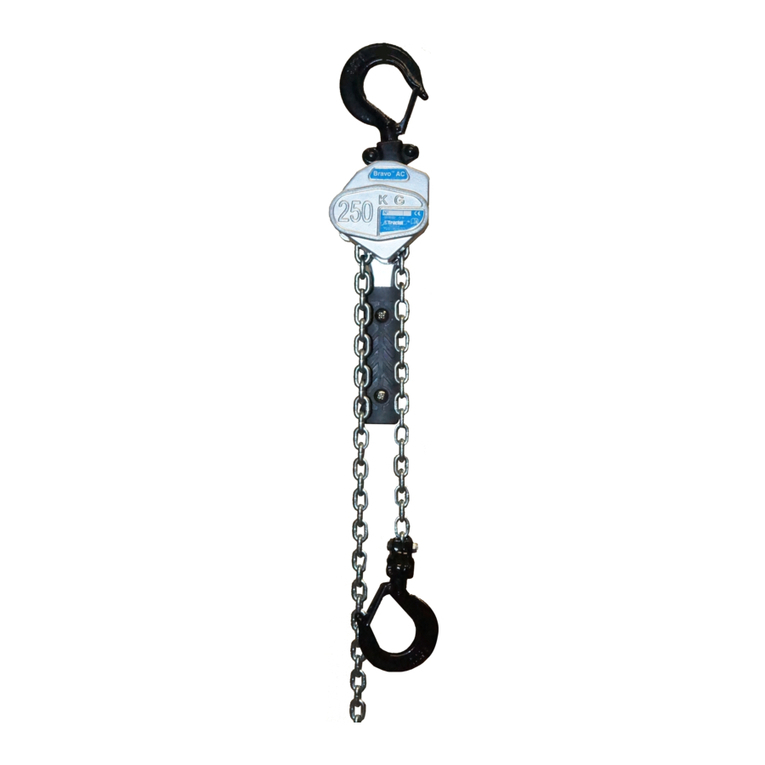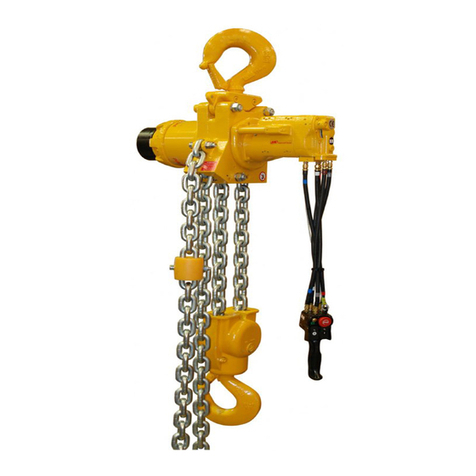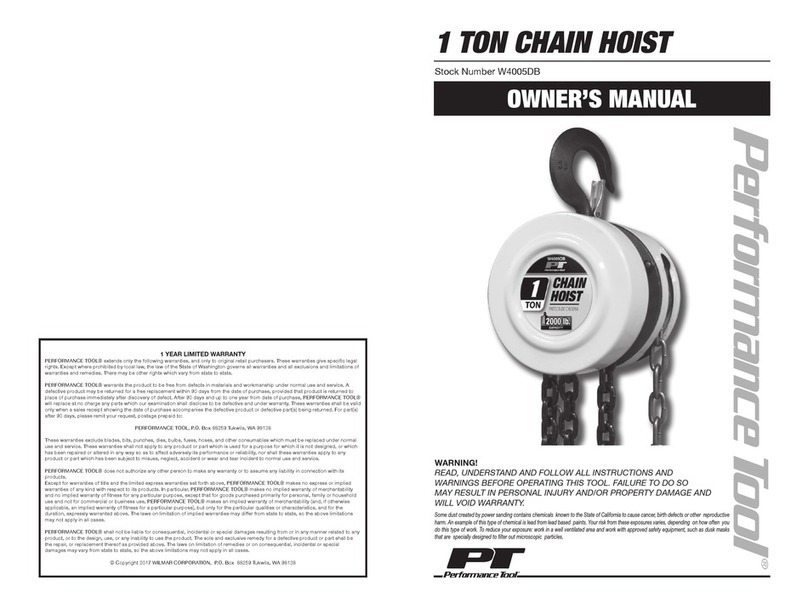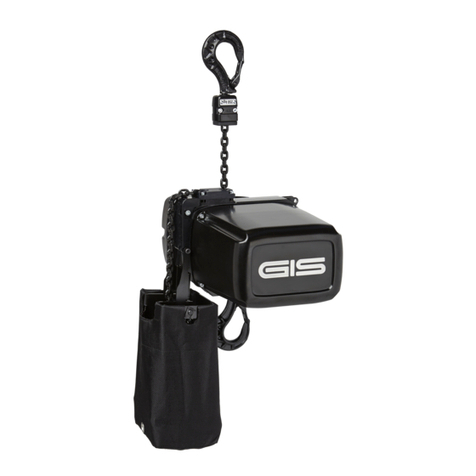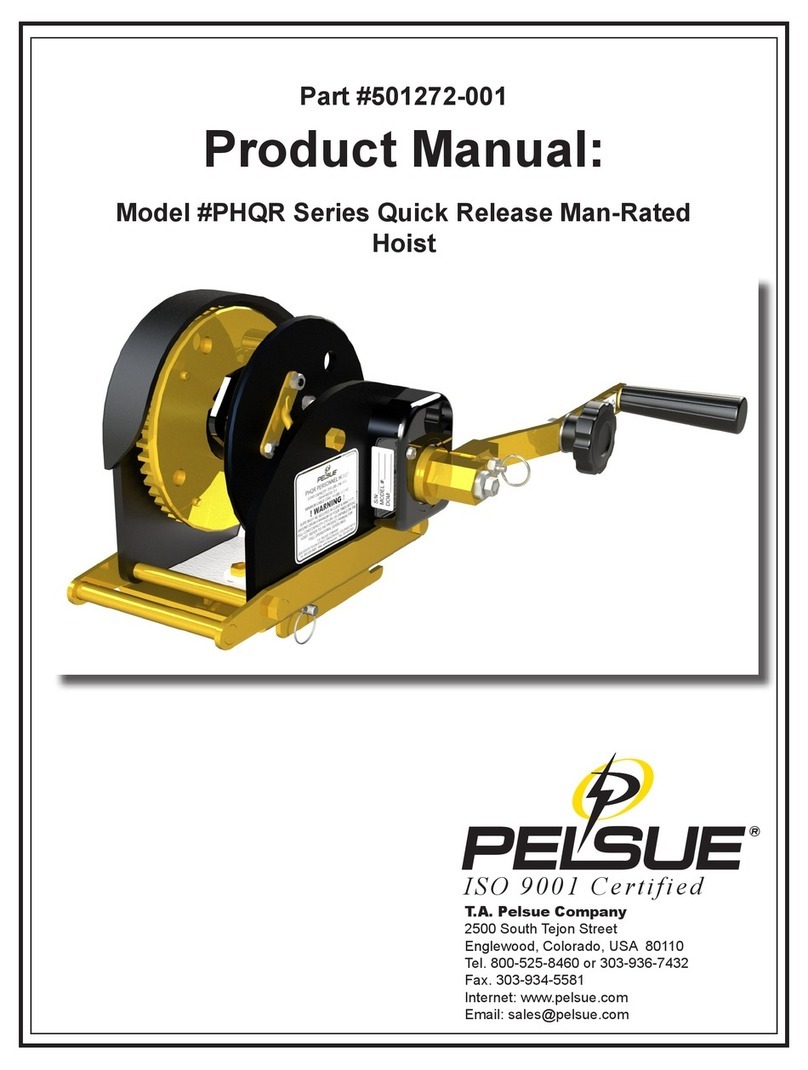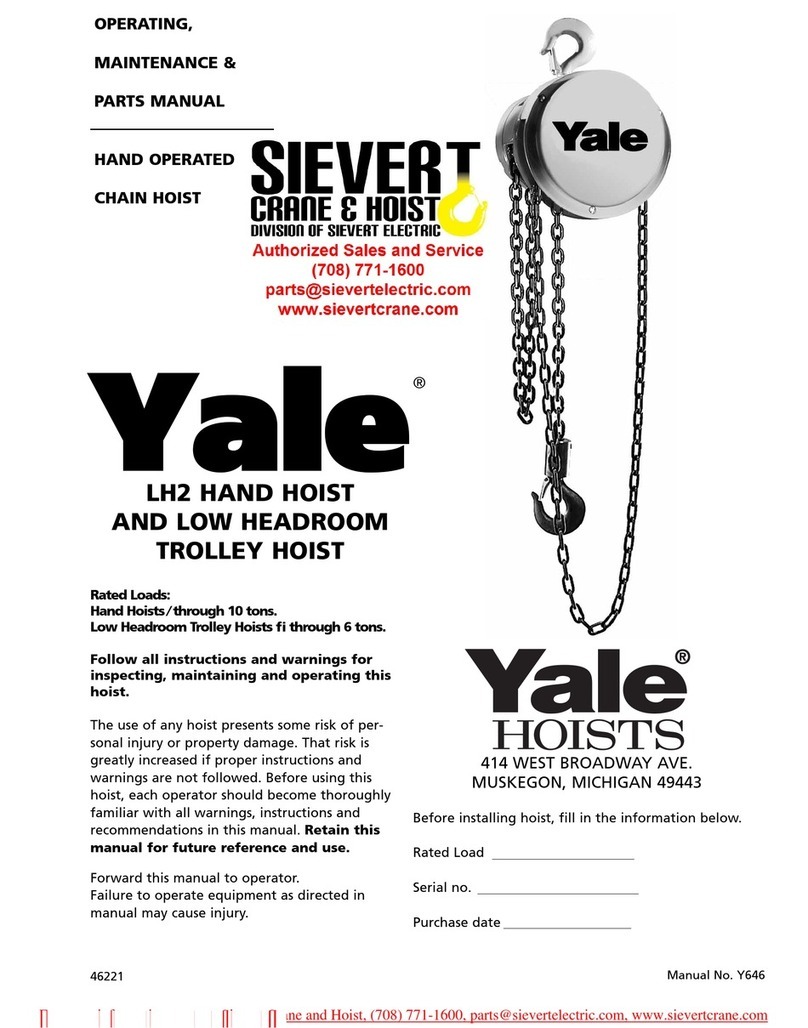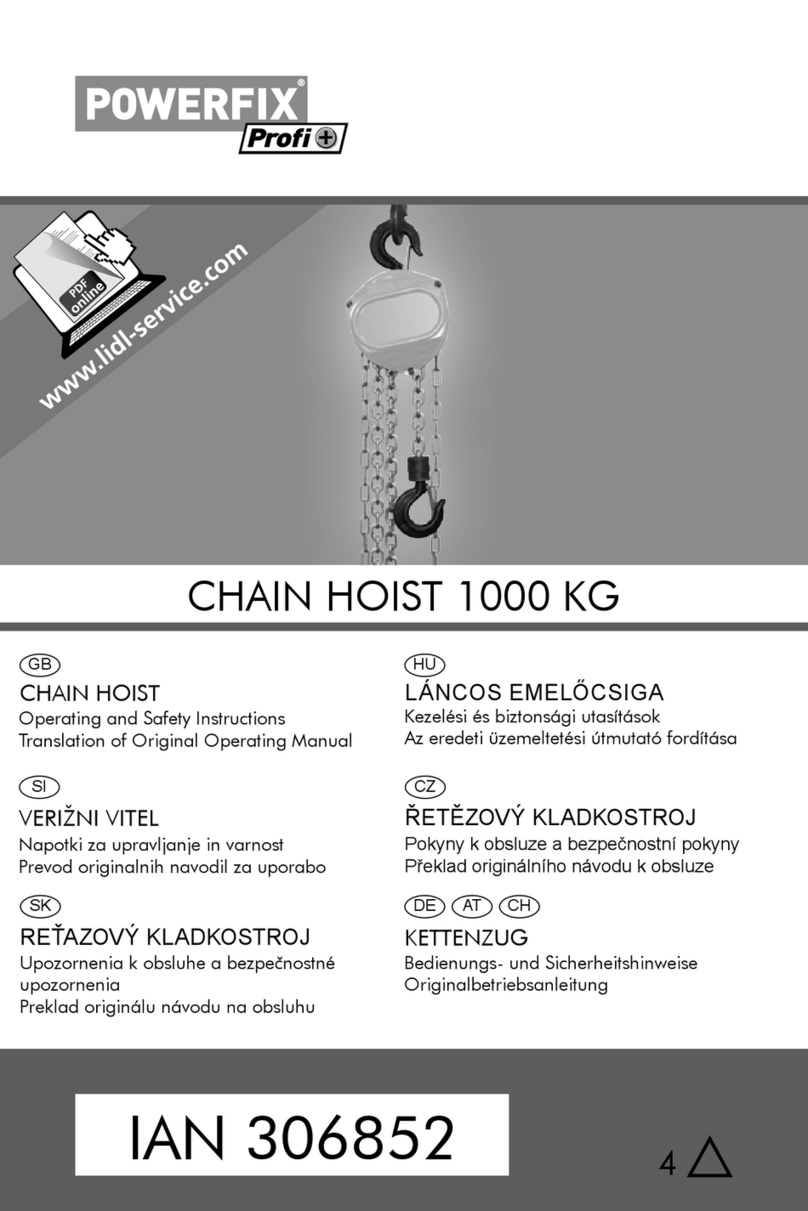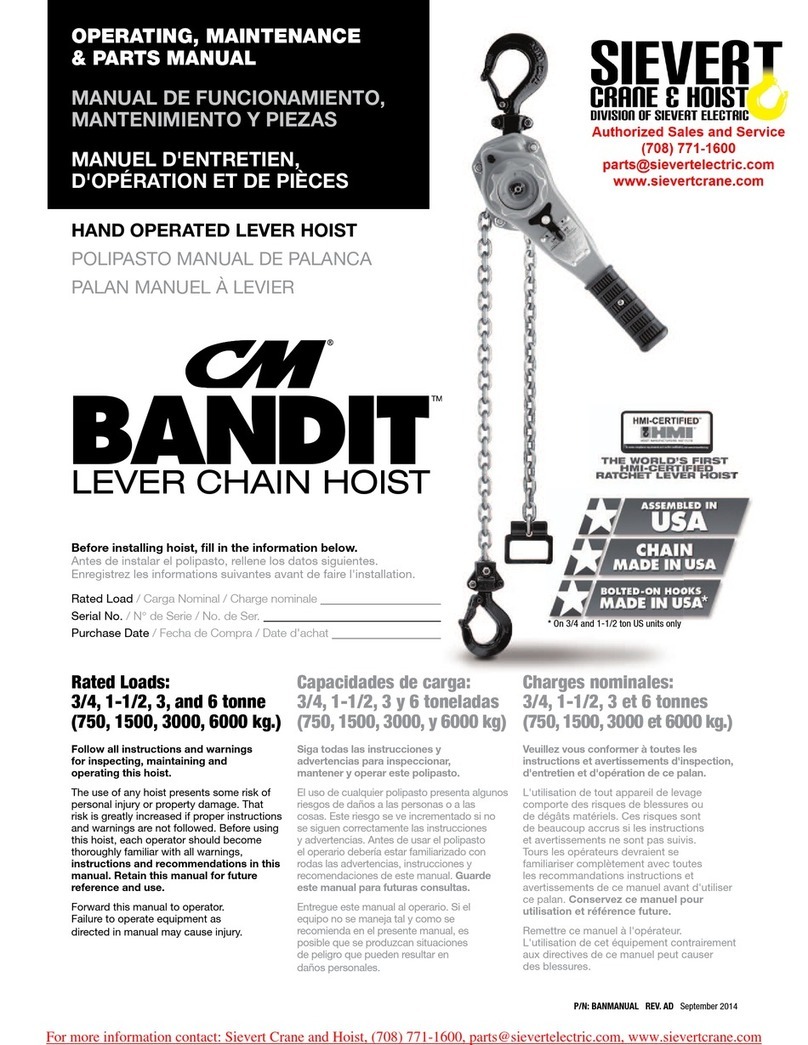
3. Wear the proper personal protective equipment when necessary. Use ANSI Z87.1 compliant
safety goggles (not safety glasses) with side shields, or when needed, a face shield. Use a
dust mask in dusty work conditions. Also use non-skid safety shoes, hardhat, gloves, dust
collection systems, and hearing protection when appropriate. This applies to all persons in
the work area.
4. Do not overreach. Keep proper footing and balance at all times.
5. Do not use the tool when tired or under the influence of drugs, alcohol or medication.
6. Remove keys or wrenches before connecting the tool to an air supply, power supply, or
turning on the tool. A wrench or key that is left attached to a rotating part of the tool may
cause personal injury.
7. Secure the work with clamps or a vise instead of your hand when practical. This safety
precaution allows for proper tool operation using both hands.
HOIST USE AND CARE
1. Do not force the hoist. Products are safer and do a better job when used in the manner for
which they are designed. Plan your work, and use the correct product for the job.
2. Check for damaged parts before each use. Carefully check that the product will operate
properly and perform its intended function. Replace damaged or worn parts immediately.
Never operate the product with a damaged part.
3. Do not use a product with a malfunctioning switch. Any power tool that cannot be controlled
with the power switch is dangerous and must be repaired by an authorized service represen-
tative before using.
4. Disconnect the power/air supply from the product and place the switch in the locked or off
position before making any adjustments, changing accessories, or storing the tool. Such
preventive safety measures reduce the risk of starting the tool accidentally.
5. Store the product when it is not in use. Store it in a dry, secure place out of the reach of
children. Inspect the tool for good working condition prior to storage and before re-use.
6. Use only accessories that are recommended by the manufacturer for use with your product.
Accessories that may be suitable for one product may create a risk of injury when used with
another tool. Never use an accessory that has a lower operating speed or operating
pressure than the tool itself.
7. Keep guards in place and in working order. Never operate the product without the guards in
place.
8. Do not leave the tool running unattended.
BEFORE EACH USE
1. To prevent serious injury or property damage, read and understand this manual before
operating.
2. To reduce the risk of injury, operate hoist using manual power only.
3. Do not exceed the rated load capacity.
4. Do not use hoist with extension on lever handle.
5. Do not use in a way that causes either hook to be side loaded.
6. Do not use chain hoist as a sling.
7. Do not support load on hook unless hook is designed for tip loading.
8. Do not operate if restricted from forming a straight line from hook to hook in the direction of
loading.
9. Inspect for damaged parts before use. Do not use if damaged.
10. Examine each chain link for damage or weak links before use. Do not operate a hoist with a
twisted, kinked, or damaged chain.
11. Do not lift people, animals, or loads above either.
12. Do not pull chain at an angle.
13. Keep bystanders away while hoist is loaded.
14. Not for use by or around children.
E2
TECHNICAL
DETAILS
IMPORTANT SAFETY
INFORMATION
EXPLODED AND
PARTS LIST
OPERATING
INSTRUCTIONS BEFORE EACH USEMAINTENANCE

